|

| In the immediate years after the
Royal Hospital opened its doors, industry considerably grew,
rail travel and services expanded rapidly and there was
considerable vitiation and air pollution apparent. Resulting
from these strictures and the poor social conditions in the
area, there became a pressing need for appropriate treatments
for eye conditions. Whilst some initial relief was obtained at
the Royal Hospital, it was clearly unable to cope in this
specialised area. |
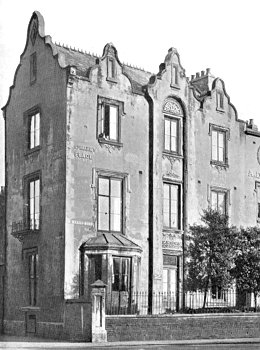
The original building called St. Mark's
Place, at the junction of St. Mark's Road and Salop Street. |
Philanthropists in Wolverhampton
gathered again under the auspices of the Briscoe family, Edward
Banks and Dr. William Millington in 1881, and rented a house in
St Mark's Road to provide eye care. Within the first year, some
2264 cases had been treated, with 50 patients a day queuing
outside for care and ward numbers for in-patients had been
extended to 13. All patients were treated irrespective of
ability to pay or subscriber tickets from employer or local
Minister of Religion.
In late 1884 it became apparent that the
facilities were insufficient and there was a great need for a
larger structure. Mr. Philip Horsman (Art Gallery benefactor)
undertook the erection of such a building at his own expense,
i.e. £5000, provided that the existing necessary amount of £8000
was raised locally. Land was purchased from the Duke of
Cleveland in Chapel Ash and the new buildings were opened on
October 23rd 1888 by the Earl of Dartmouth. |
| Names amongst the benefactors
included Barlow & Son, W. H. Butler, Messrs Crane, Gibbons,
Hickman, Hodson, Jenks and Graham; the construction was
undertaken by H. Willcock, gas fittings by Meynell and
electricity by Hartill; T. H. Fleeming was the architect. |
| In addition to Dr. Millington, Dr.
Chesshire had joined the staff and saw O.P.D. patients on four days
a week. Provision of funds came from prominent local businessmen, a
workmen’s fund and legacies; hospital Saturday and Sunday funds
added to the totals By the year 1893, some 12,000 patients were
being treated annually. |
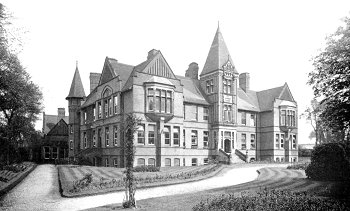
The Wolverhampton and Midland Counties Eye
Infirmary which opened in 1888. |
|
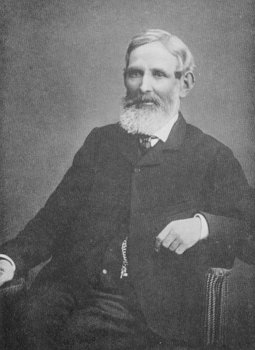
Mr. Philip Horsman, J.P. |
In the early 1900s, land was
purchased on which the Nurses Home now stands and a Porters Lodge
was built. At the outbreak of World War 1, annual patient numbers
treated had risen to 23,000 and 25 beds were set aside for war
victims. Queen Alexandra Day collection was initiated and raised
£4,500 from the general public in its first appeal. In the immediate
war aftermath, many administrative changes took place and funding
increased. A complete renovation of the operating theatre was
undertaken at a cost of £1,200 and new heating structures added. In
the mid twenties, Dr Campbell Orr joined the staff and a new Nurses
Home was constructed, furnished generously by 'Two Old
Friends', and an ultra-violet unit was opened.
By the thirties, total income had grown to
£10,000 and a total of 142,000 patients were being treated
annually. |
| The resident medical staff now
included many overseas staff from the wider Commonwealth. A fund was
set up to provide a new O.P.D., pharmacy and A/E facilities and
these opened in 1937, much improving In and Out patient facilities.
With the advent of World War II, much provision was made for the war
wounded and numbers treated from the immediate locale totalled
100,000 per annum. |
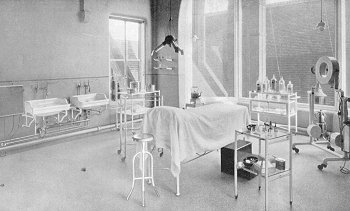
The operating theatre. |
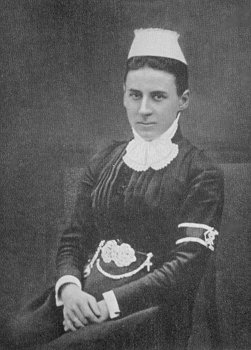
Miss Newton, later Mrs. Lanfear, who was
Matron from 1891 to 1906. |
Immediately after the war, Compton
Hall (now the hospice) was purchased to provide extra staff
facilities, a male and female nurse training school was established
and arrangements were made for local industrial nurses to receive
training for the treatment of industrial eye injuries. 1948 saw the
hospital absorbed as part of the new NHS; whilst the scale of
factory-based eye trauma continued at high levels, Wolverhampton Eye
Infirmary became recognised both nationally and internationally as a
centre of renown for corneal grafting. Throughout the seventies and
eighties, with a much stricter provision of health and safety acts,
the scale of injuries diminished sharply. This was somewhat balanced
by an increase in ocular conditions from migrants from the sub
continent of Asia. A complete new theatre block was opened in 1980
with the original single theatre being converted to a hospital
chapel, stained glass windows from the local redundant church of St
Mark's were added. |
| The advent of day case surgery for
cataracts and other eye conditions and better available ophthalmic
drugs saw the bed numbers sharply diminish in the nineties, and with
the transfer of night emergency services to the New Cross hospital
there remains talk of a complete transfer of all eye services to
this site. Much opposition will be shown to this possibility and for
the moment the Chapel Ash site maintains its excellent reputation
and care that it has embraced in Wolverhampton for 120 years. |
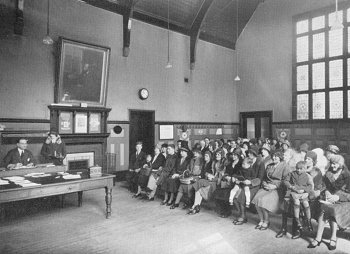
The Out-Patients' Hall. |
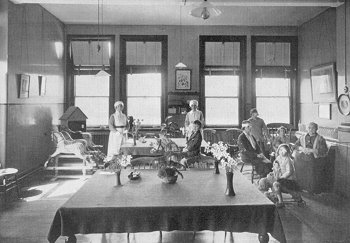 |
The Women's Day Ward. |
 |
Return to
the
previous page |
|